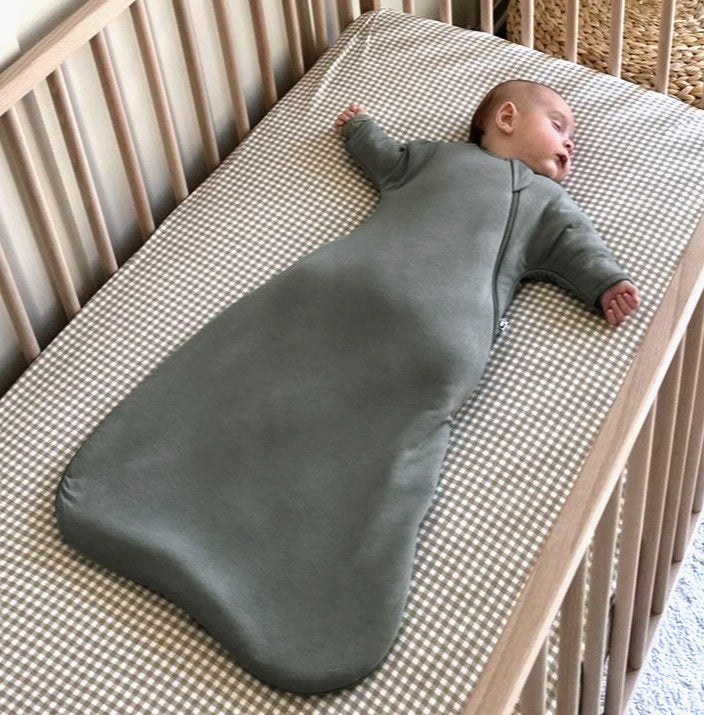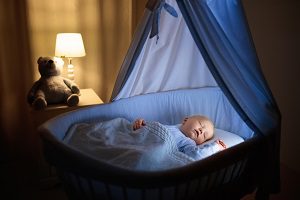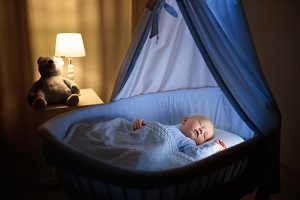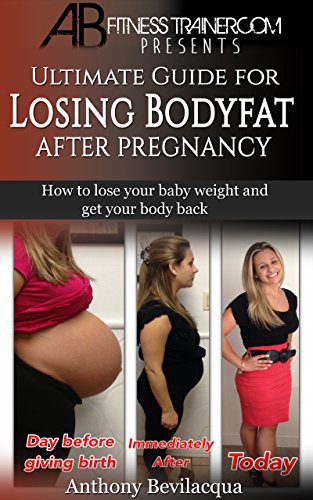How Long Can a Baby Sleep in a Bouncer: Ultimate Guide
No, you should never let your child sleep in a baby bouncer. The safest place for your baby to sleep is in a baby cot.
Baby sleep safety is a top priority for parents, and it’s important to know the appropriate sleeping arrangements for infants. While baby bouncers can be a convenient and soothing option for playtime or short periods of supervised rest, they should never be used as a substitute for a safe sleep environment.
This article will provide valuable information about the duration a baby can sleep in a bouncer, as well as the potential risks associated with prolonged use.
Understanding The Safety Concerns
When it comes to ensuring the safety and well-being of our little ones, parents can never be too careful. This includes creating a safe sleep environment for our babies. One common question that often arises is: How long can a baby sleep in a bouncer? While it may be tempting to let your baby sleep in a bouncer, it is important to understand the safety concerns associated with this practice. In this section, we will explore the risks of letting a baby sleep in a bouncer and the importance of creating a safe sleep environment.
The Risks Of Letting A Baby Sleep In A Bouncer
Letting your baby sleep in a bouncer can pose several risks that should not be ignored. These risks include:
- Suffocation Hazard: Babies have weak neck muscles, and if they slump over while sleeping in a bouncer, it can obstruct their airways and lead to suffocation.
- Neck and Spinal Cord Injuries: Babies who sleep in a bouncer for extended periods are at risk of sustaining neck and spinal cord injuries due to improper positioning and lack of support.
- Increased Risk of SIDS: Studies have shown that placing babies in an inclined position, such as in a bouncer, can increase the risk of Sudden Infant Death Syndrome (SIDS), which is the leading cause of death in infants under one year of age.
The Importance Of A Safe Sleep Environment
Creating a safe sleep environment for your baby is crucial for their health and well-being. Here are some key factors to consider:
- Use a Flat Surface: It is recommended to place your baby in a crib or bassinet with a firm and flat mattress. This helps promote proper spinal alignment and reduces the risk of suffocation.
- Avoid Placing Pillow-Like Objects: Keep the sleep area free from pillows, stuffed animals, and other soft items that can pose a suffocation hazard.
- Practice Back Sleeping: Always place your baby on their back to sleep, as this position has been proven to reduce the risk of SIDS.
- Monitor the Temperature: Ensure that the room temperature is comfortable and not too hot or cold. Dress your baby in appropriate clothing and avoid overheating.
- Create a Calm Sleep Environment: Use soft lighting, white noise machines, or gentle lullabies to create a peaceful sleep environment that promotes restful sleep.
Remember, the safety and well-being of your baby should always be a top priority. While a bouncer may be a convenient tool for playtime or limited supervised use, it is not designed for prolonged or unsupervised sleep. By understanding the safety concerns associated with letting a baby sleep in a bouncer and creating a safe sleep environment, you can help ensure that your little one sleeps soundly and safely.
Recommended Duration Of Baby Sleep In A Bouncer
A baby bouncer can be a useful tool for soothing and entertaining your little one. However, it’s important to understand the recommended duration of baby sleep in a bouncer to ensure your baby’s safety and well-being. Pediatric experts have provided guidelines to help parents make informed decisions when it comes to allowing their babies to sleep in a bouncer.
The Guidelines From Pediatric Experts
Pediatric experts recommend that babies should not sleep in a bouncer for extended periods of time. The American Academy of Pediatrics (AAP) advises against using a bouncer as a regular sleep environment for your baby. Instead, it is recommended that babies sleep on a firm and flat surface, such as a crib or bassinet, that meets current safety standards.
While short naps in a bouncer under supervision may be considered safe, it is essential to prioritize your baby’s safety and well-being. Babies have weak neck muscles, and extended periods in a bouncer can increase the risk of suffocation or positional asphyxia.
It’s important to note that babies should not be left unsupervised while sleeping in a bouncer, even for short periods. Babies can shift positions or slump over, which can compromise their airways and lead to breathing difficulties.
Factors To Consider For Safe Sleep In A Bouncer
When considering allowing your baby to sleep in a bouncer, there are several factors to consider to ensure their safety:
- Choose a bouncer that complies with current safety standards to reduce the risk of accidents.
- Always supervise your baby when they are sleeping in a bouncer, even for short naps.
- Ensure that your baby’s head is properly supported to prevent any obstruction of the airway.
- Limit the duration of your baby’s sleep in a bouncer and gradually transition them to a crib or bassinet for longer periods of sleep.
- Place the bouncer on a stable and secure surface, away from any potential hazards or objects that could pose a risk to your baby.
- Avoid using pillows, blankets, or other soft bedding in the bouncer to reduce the risk of suffocation.
- Follow the manufacturer’s guidelines for weight and age restrictions to ensure that the bouncer is suitable for your baby.
By considering these factors and following the guidelines from pediatric experts, you can create a safe sleep environment for your baby and prioritize their well-being. Remember, a baby bouncer should primarily be used for play and entertainment purposes rather than as a substitute for a proper sleep surface.
Alternatives To Baby Sleep In A Bouncer
When it comes to baby sleep, many parents wonder about the alternatives to using a bouncer. While bouncers can be a convenient soothing option for babies, it’s important to explore other safe sleep options and soothing methods. In this article, we will discuss safe sleep alternatives for babies and explore various soothing methods that can be used in place of a bouncer.
Safe Sleep Options For Babies
When it comes to ensuring a safe sleeping environment for your baby, it is crucial to follow the guidelines recommended by experts. Here are some safe sleep options for babies:
- Use a baby cot or crib: A baby cot or crib provides a secure and comfortable space for your baby to sleep. Make sure the mattress is firm and fits snugly in the cot or crib.
- Back to sleep position: Always place your baby on their back to sleep, as it reduces the risk of Sudden Infant Death Syndrome (SIDS).
- Remove loose bedding: Avoid using pillows, blankets, or soft toys in the sleeping area, as they can pose a suffocation hazard.
- Monitor the room temperature: Keep the room at a comfortable temperature, between 68°F and 72°F, to ensure your baby doesn’t get too hot or too cold.
Exploring Other Soothing Methods
If you’re looking for alternatives to baby sleep in a bouncer, there are various soothing methods that you can try:
- Swaddle your baby: Swaddling can provide a sense of comfort and security for your baby. Wrap them snugly in a blanket, ensuring their hips and legs can move freely.
- Use a baby swing: A baby swing can mimic the gentle rocking motion that babies find soothing. However, it’s important to never let your baby sleep in a swing unsupervised.
- Try white noise: Background noise, such as a white noise machine or a fan, can help create a soothing environment for your baby and promote better sleep.
- Practice skin-to-skin contact: Holding your baby against your chest, with skin-to-skin contact, can have a calming effect on them and help them relax.
Remember, every baby is different, and what works for one may not work for another. It’s important to observe your baby’s cues and try different methods to find what soothes them best.
Creating A Safe Sleep Environment In A Bouncer
It is not recommended to let a baby sleep in a bouncer. The safest place for a baby to sleep is in a baby cot that meets safety standards.
Important Safety Tips For Using A Baby Bouncer
When it comes to using a baby bouncer for sleep, safety should always be the top priority. Follow these important safety tips to ensure a secure sleep environment for your little one:
- Always use the baby bouncer on a flat and stable surface to prevent tipping or rocking accidents.
- Check the weight and age restrictions specified by the manufacturer to ensure your baby fits within the recommended limits.
- Never leave your baby unattended while sleeping in a bouncer, as they may roll or slide out and become injured.
- Remove any loose bedding, pillows, or stuffed animals from the bouncer to reduce the risk of suffocation or choking hazards.
- Ensure that the baby is securely fastened in the bouncer using the provided straps or harness, to prevent falls or injuries.
- Regularly inspect the bouncer for any signs of wear and tear or broken parts, and replace or repair as necessary.
How To Ensure Comfort And Safety For Your Baby
Creating a comfortable and safe sleep environment in a bouncer is essential for your baby’s well-being. Here are some tips to ensure your baby’s comfort and safety:
- Choose a baby bouncer that provides adequate support and cushioning for your baby’s delicate body.
- Position the bouncer in a quiet and peaceful area, away from any loud noises or distractions that may disrupt your baby’s sleep.
- Check the temperature of the room to ensure it is comfortable for your baby. Avoid placing the bouncer near drafts or direct sources of heat.
- Provide your baby with a cozy and breathable blanket or sleep sack for added warmth and comfort while sleeping in the bouncer.
- Monitor your baby’s sleep position to ensure they are not slumped or in an uncomfortable position that may obstruct their breathing.
- Follow the recommended guidelines for maximum time your baby can spend sleeping in the bouncer to avoid prolonged periods of immobility.
By following these safety tips and ensuring your baby’s comfort, you can create a safe sleep environment in a bouncer that promotes healthy and restful sleep for your little one.

Credit: gunamuna.com
Frequently Asked Questions For How Long Can A Baby Sleep In A Bouncer
Is It Ok To Let Baby Sleep In Bouncer?
No, it is not safe for a baby to sleep in a bouncer. The safest place for your baby to sleep is in a baby cot. Choose a baby bouncer that complies with safety standards. Avoid letting your baby sleep all night in a swing or bouncer, as it can be dangerous.
How Long Can A Baby Stay In A Bouncer?
A baby should not stay in a bouncer for sleep. It is safest for them to sleep in a baby cot.
How Long Can A Baby Stay In A Jumper?
It is not recommended to let your baby sleep in a jumper or bouncer. The safest place for your baby to sleep is in a baby cot. Always choose a baby bouncer that complies with safety standards.
Can Baby Sleep In Swing If Supervised?
It is not safe for a baby to sleep in a swing, even if supervised. It can lead to suffocation and is especially dangerous for babies under four months old. It is best to let your baby sleep in a baby cot.
Conclusion
It is important to prioritize the safety of your baby when it comes to sleep. While a baby bouncer can be a convenient and soothing option during the day, it is not recommended for extended periods of sleep. The safest place for your baby to sleep is in a cot that complies with safety standards.
Always ensure that your baby is supervised and their head and neck are properly supported while in a bouncer. Remember to prioritize your baby’s safety and comfort above all else.







